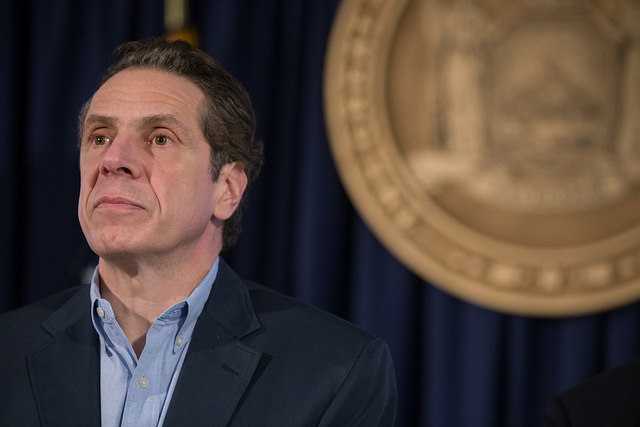Cuomo Cares More About the New Tappan Zee Bridge Than NYC Subways and Buses
The governor has spent most of his time in office consumed with building a huge double-span highway bridge, while New York's transit system slides into catastrophic disarray.

For the better part of his nearly seven years in office, Andrew Cuomo has been consumed with building a replacement for the Tappan Zee Bridge, which he wants to name after his father Mario.
Today Cuomo cut the ribbon on the first of two spans that comprise the new bridge, setting off another round of fawning coverage in the New York Times. The governor is getting a lot of credit for building the bridge on time and under budget, but the real story of the new Tappan Zee is about misplaced priorities and Cuomo’s edifice complex.
There’s a lengthy archive of Streetsblog reporting about the problems with the replacement bridge — the excessive size and scope, the lack of transitways, the opaque finances. I won’t recap everything at length here, but I do want to encapsulate why this bridge project speaks to everything that’s wrong with Cuomo’s infrastructure policies.
The bridge succeeds as a visually impressive structure and monument to the Cuomos — and that’s it.
As a piece of the regional transportation system, it fails. With more capacity for driving but little in the way of transit improvements, the bridge is going to feed sprawl in New York’s northern suburbs.
As a use of scarce public funds, the new bridge is also a failure. Throughout the planning and construction process Cuomo has desperately insisted that this $4 billion project won’t lead to higher tolls, which are now set at $5 cash/$4.75 E-ZPass eastbound. He has searched high and low for government financing and other subsidies — at one point going so far as to seek $500 million in clean water loans to build his highway bridge, a request that the EPA rejected.
Cuomo is promising a toll freeze on the bridge until 2020. More than anything else, what makes that possible is $2 billion in one-time bank settlement funds that Cuomo directed toward the project and the Thruway Authority to suppress the price of tolls.
Think about that for a moment. Cuomo isn’t spending that $2 billion to build the bridge — he’s allocating it so the drivers who use the bridge don’t have to shoulder the cost of construction. It’s a gigantic giveaway to suburban motoring.
At the same time, New York City’s subway and bus service keeps getting worse. Solving all the city’s transit problems isn’t a simple matter of spending $2 billion, but it’s telling that Cuomo chose to spend that windfall cash on a highway bridge named after his father and not, say, upgrading subway signals or implementing technology that enables all-door boarding on MTA buses.
Out of $9 billion in bank settlement funds, Cuomo has given zilch to New York City transit.
I admit I’m glancing over one other good thing about the new bridge — it cost less to build than the budget called for. But that also stings for transit riders, in its own way. High costs are a huge limiting factor constraining transit capital improvements in NYC. If Cuomo can enforce cost discipline on bridge construction, he should be able to do it for transit projects too.